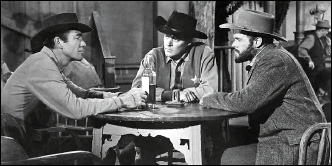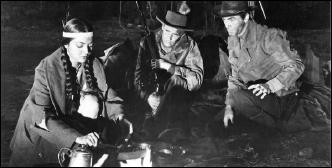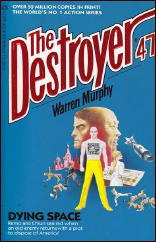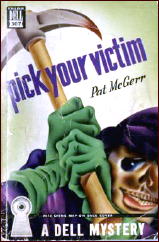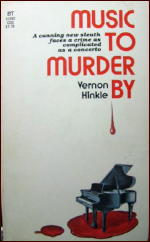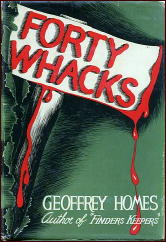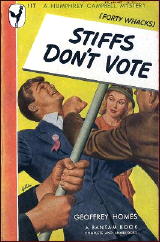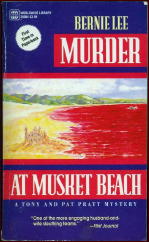Reviewed by DAVID VINEYARD:
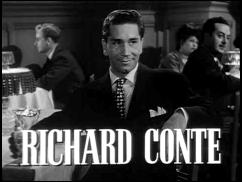
SOMEWHERE IN THE NIGHT. 20th Century Fox, 1946. John Hodiak, Nancy Guild, Lloyd Nolan, Richard Conte, Josephine Hutchinson, Fritz Kortner, Sheldon Leonard, Lou Nova, with Jeff Corey, Henry Morgan, Whit Bissell, and John Russell. Screenplay by Joseph L. Mankiewicz & Howard Dimsdale; adapted by Lee Strasberg, based on a story by Marvin Borowsky. Directed by Joseph Mankiewicz.
The Red Scare of the post war era kept this terrific noir film from 20th Century Fox off television and forgotten for years thanks to the blacklist, and even today it is one of the harder major noir outings to find and one better known by genre historians than film fans.
That’s despite the fact this one has everything, including a private eye, a sympathetic cop, a nightclub chanteuse with a husky voice, an amoral fat man, his brutal henchman, a haunted woman with a failing mind, a sanitarium where a madman holds the clue to the mystery, and a hero with amnesia.
Perhaps because none of the iconic noir actors (other than Conte and to a lesser extent Nolan) are in it, and because Mankiewicz is better known for films like Gentlemans’ Agreement and Letter to Three Wives than this one, it is less appreciated. It often seems to be a forgotten noir despite the fact it is an A production with an A cast. It also has a smart script with more twists than Agatha Christie and direction by one of Hollywood’s best (Joseph L. Mankiewicz).
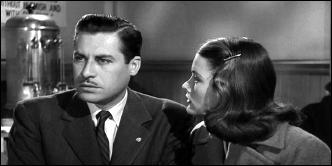
George Taylor (John Hodiak) fell on a grenade to save his buddies in the South Pacific and now he has amnesia, a new face, and more than a little paranoia about it, enough so he doesn’t let the Marines know he doesn’t know who he is. Back in the states and about to be released by the service he finds a letter to a man named Larry Cravat from an angry woman that leads him to Los Angeles to find Cravat, who may know who he is.
Following Cravat’s trail isn’t as easy as he thinks though. No one seems to know Cravat or George Taylor, and when he discovers Cravat left him a bag in unclaimed luggage he finds a gun and shoulder holster and a note that Larry Cravat left $5,000 in a bank account for him.
The trail leads to a club called the Cellar where a pair of thugs get on his trail and he meets chanteuse Chris (Nancy Guild) whose girl friend was the woman who wrote the letter to Cravat. When he is hijacked by the mysterious Anselmo (Fritz Kortner), who has him worked over trying to learn where Cravat is, he gets dumped on Chris doorstep because her address was in his pocket.
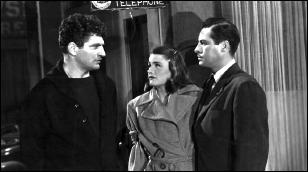
Chris is a sucker for a sob story (“You’re tough as a love song.â€), and calls in her charming boss Max Phillips (Richard Conte) who suggests Taylor talk to cop Lt. Kendall (Lloyd Nolan), a sympathetic homicide detective who hates the movie cliche of cops always having their hats on.
From Kendall they learn Cravat was a small time private eye who somehow got involved in a scheme to launder two million dollars in Nazi loot. The loot and Cravat both disappeared three years earlier leaving a dead body, the Nazi trying to launder the money.
There was another man with Cravat that night, and Taylor begins to suspect it was him — but which of them killed the mysterious Steel?
Taylor finds there was a witness to the shooting, Conway, but he was the victim of a hit and run and went insane, and is now in a sanitarium where no one is allowed to see him. Taylor gets to him, but not before Conway is stabbed by a small bespectacled man who has been following Taylor.
The twists and surprises are too good to ruin with even a spoiler warning, so I won’t go any farther with the plot. I will say there are fewer holes in the plot than most noir films, and the twists my well surprise you the first time you see it. Certainly there are at least two good red herrings that don’t pay off the way you expect, but they do pay off. You may well be suspecting a Third Man payoff and get something much different.
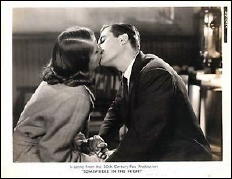
One thing to note is that most of the characters are well developed, and far from the cliches you expect. Fritz Kortner’s Anselmo is a former big time crook making a last desperate bid for the big time, and resigned to the fact he probably won’t get the brass ring. He’s almost sympathetic, and his last line is delivered with a sort of sad irony and a resigned shrug (“The jig is up.â€).
Josephine Hutchinson has a good role as the witness sister who has wasted her youth and beauty on her sick father and seems to know Taylor when no one else does. Hodiak plays well in this scene, at once hopeful and compassionate.
Conte proves a tough good-hearted sort, a far cry from his usual bad guys, and it’s only at the end you may recognize the Conte you know. Finally there’s Lloyd Nolan as Lt. Kendall, a cop with a brain and a heart, who lets the players act out the drama while he waits to sort out the survivors, but can’t help having his favorites. He has little screen time, but makes the most of it, and the running gag about his lack of a hat is all the funnier if you recall his Michael Shayne almost never shed his chapeau. Henry Morgan, Whit Bissell, Jeff Corey, and John Russell all have bits.

Hodiak is very good as the haunted man who can trust no one, not even himself. He is much more victim than tough guy, paranoid with good reason, and not certain he really wants to know the truth even if it has $2 million tied to it.
It’s a role that could easily be played over the top or as a cliche, but Hodiak is believable and sympathetic as a man uncertain if he wants to know the truth.
Nancy Guild is doing a road-show Lauren Bacall, down to the hairdo, but she does it well, and makes a satisfying substitute for Bacall or Lisbeth Scott, well worth looking at, and playing a woman who is leading with her chin going to bat for a man who may not be as nice as he seems.
It’s not a particularly good part and probably the least well written in the film, but she makes up for that by managing to embody her character with strength and intelligence, and a kind of understated teasing sexuality.
Somewhere in the Night is a slick well done studio noir and well worth seeing if you have missed it.
The film’s last line is Lt. Kendall’s and a good one:
“I found out why detectives always leave their hats on. You don’t want to have a hat in your hand when you have to shoot someone. Looks like the movies were right.â€
